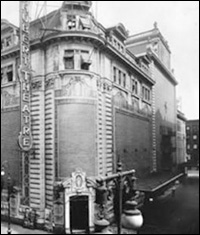
*
Ask Playbill.com answers your (and sometimes our own) theatre-related questions. To ask a question, email [email protected]. Please specify how you would like your name displayed and please include the city in which you live.
Question: The Playbill.com staff wondered how Shubert Alley got its name, since it doesn't look much like an alley.
Shubert Alley may very well be the most famous alley in New York City. Certainly in New York theatre circles, it's a geographical landmark as legendary as 42nd Street and Times Square itself. It was already famous enough in 1963 that its 50th anniversary was celebrated with a ceremony well covered by the media. Today, stage professionals cut through the small thoroughfare — running between 44th Street and 45 Street midblock between Broadway and Eighth Avenue — at least once or twice a week. "I think it's considered an important an landmark in the theatre community," said Robert Wankel, president of the Shubert Organization, who says he runs into colleagues in the alley all the time. "Everyone's on their way to Sardi's."
But a close inspection of the street quickly reveals that it has very little in common with other Manhattan alleys, like Shinbone Alley, Jersey Street and Cortlandt Alley, all south of 14th Street. Those streets are fairly gritty and dust-strewn. They're in keeping with our mental picture of what an alley should look like. Shubert Alley is spic and span and neatly paved. There's a row of handsome posters advertising Broadway shows on the west wall, bisected by the boutique gift shop One Shubert Alley. On the east side, is the family restaurant Junior's. Were things always like this?
| |
 |
|
| Shubert Alley (at right of Shubert Theatre) in 1919. |
The strip has not always been as commodious as it now is. In 1949, the alley was widened by 15 feet and the old fence removed. But that was nothing compared to the size it would have become had the City Planning Commission had their way in 1970. The commission proposed to have Shubert Alley extended by eight blocks, leading up to 53rd Street.
Another thing that had remained constant is the Shubert executives' habit of parking their cars in the alley, making their commute to offices atop the Shubert Theatre a very short one indeed. Mayor Bloomberg once joke that the late Shubert Chairman Gerald Schoenfeld had the "best parking spot in New York City." In the old days, Lee and J.J. Shubert exercised the same privilege. Lee, a car collector, would station his Rolls-Royce or Isotta-Fraschini in the alley. Frank Baker, a Shubert chauffeur for a half a century beginning in 1920, parked cars first for Lee and later for Lawrence Shubert Lawrence, who owned a Cadillac.










